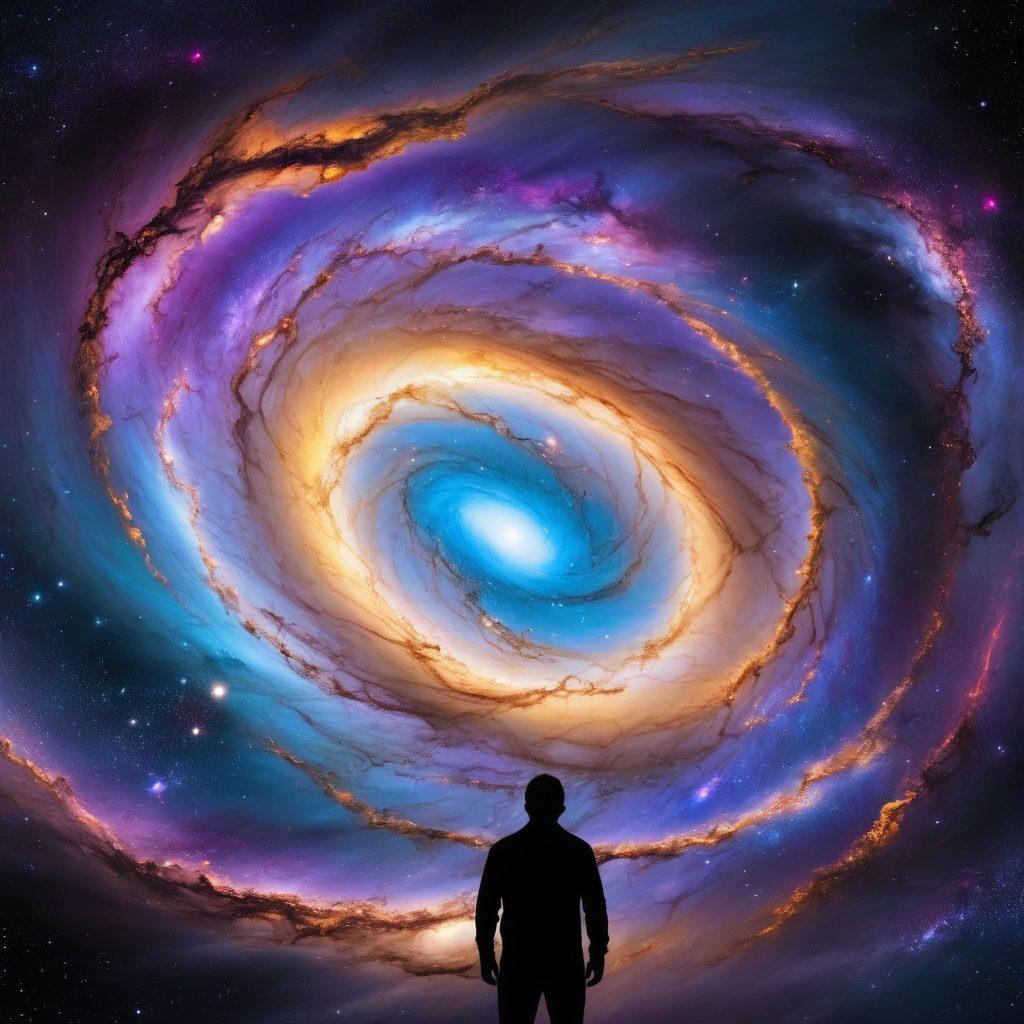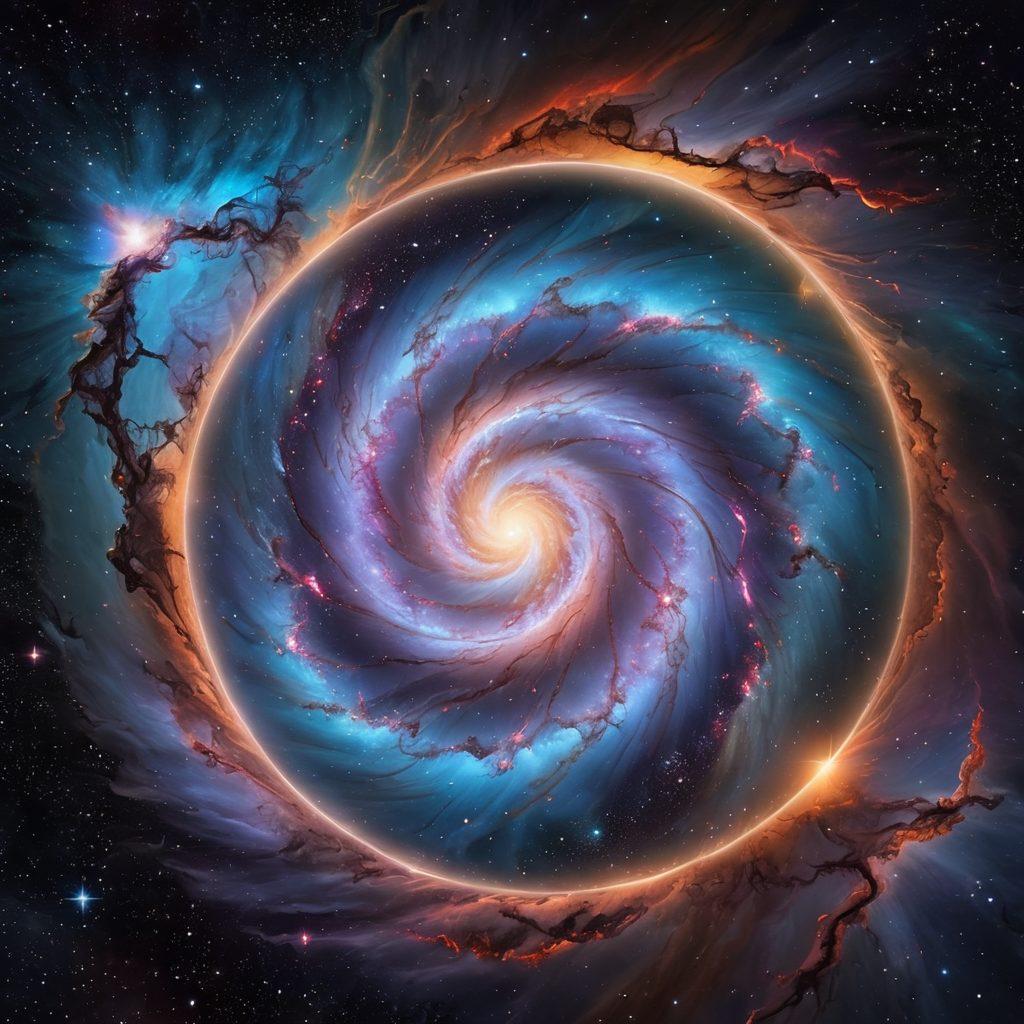Exploring the Joyful Wonders of the Cosmos: A Journey Through Nebulae and Stellar Formations
As we peer into the vast expanse of the universe, we find ourselves entranced by the breathtaking beauty of nebulae—these fantastic displays of light and color, which serve as the cosmic playground for star formation. Picture this: the Eye of God nebula, also known as the Helix Nebula, captures our imagination with its radiant hues and symbolizes the joyful wonders that await in space. This celestial symphony of light not only dazzles our senses but also unravels the secrets of the cosmos, pushing the boundaries of space science and cosmology. It poses a question: are we merely observers, or are we part of this grand design of star formation and galactic evolution?
Nebulae represent a delicate balance between chaos and creation; they are the interstellar wombs nurturing celestial bodies that will one day become stars and planets. Think about it! Each radiant blob of gas and dust holds the potential to birth countless stars, some of which may even host habitable planets. As astronomers gaze through their telescopes, from observatories perched atop mountain peaks to satellites orbiting Earth, they are not just looking at clouds of gas; they are witnessing the very foundation of our universe. What does this mean for us as we dive deeper into universe exploration?
The colors of nebulae are not just for aesthetic appreciation; they tell tales of the cosmic phenomena happening within. The varying wavelengths of light emitted by these astronomical wonders provide insight into their composition and evolution. For instance, the iconic Orion Nebula, a stellar nursery, appears bathed in deep reds and greens, indicating the presence of excited gases and ongoing star formation. Isn't it thrilling to think that these vibrant displays are the result of intricate interactions between particles in a seemingly chaotic environment? This exciting narrative sparks curiosity—what else is waiting to be discovered in the depths of the cosmos?
While gazing at beautiful images of nebulae might feel like peering into a cosmic painting, these celestial features also remind us of the darker aspects of our universe. Dark matter, which remains elusive despite being integral to our understanding of galactic structures, raises profound questions. How do such unseen forces influence the shapes and behaviors of nebulae? As we unravel these layers of mystery, we can't help but feel ecstatic about the new frontiers in space exploration that lie ahead. The quest for knowledge about our universe beckons to each of us, inviting us to become explorers in our own right.
As we journey through the vast realms of the cosmos, seeking to uncover the story behind each nebula, we realize the importance of the interconnectedness of all celestial bodies. The dance of the stars, the birth of new planets, and the heart of a quasar pulsate with an extraordinary rhythm that reflects the universe's creativity. As you ponder the next time you look up at the night sky, take a moment to appreciate not just the constellations that sprinkle the dark canvas above, but also the dynamic, vibrant nebulae that are nature's own masterpieces. In this shared quest for understanding, let us remember that each bit of knowledge gained—and each joyful discovery made—brings us one step closer to understanding our place in this vast, magnificent cosmos.
From Helix to Quasar: Ecstatic Discoveries in the Heart of Cosmic Phenomena
Have you ever looked up at the night sky and wondered about the shimmering jewels that hang over us, those celestial treasures waiting to be unraveled? The universe is an expanse of mystical beauty that captivates the human spirit, with nebulae and stellar formations playing a stunning lead role in this majestic performance. From the twisted arcs of the Helix Nebula to the ageless brilliance of quasars, every astronomical object offers a joyous narrative that invites us deeper into the cosmos. As we embark on this journey through cosmic phenomena, let’s explore how these fantastic intricacies enlighten our understanding of the universe.
Picture this: a gigantic cloud of gas and dust stretches over light-years, glowing softly amidst the darkness of space. This is what makes nebulae so magical! They stand as nurseries for star formation, a reminder of the constant cycle of creation that unfolds in our universe. The ecstatic beauty of the Orion Nebula, for instance, captivates astronomers and stargazers alike, with its radiant colors and swirling patterns, painting a portrait of new beginnings. Isn't it astounding that from this cosmic canvas, stars will eventually be birthed, lighting up the night sky and giving life to new planets?
What about quasars? Now, if you’ve never encountered the term before, prepare to be amazed! Quasars are the brilliant beacons of light found in extragalactic space, often outshining entire galaxies. They appear as tiny points in our telescopes—yet they lie billions of light-years away! As if they were cosmic lighthouses, overseeing the vast sea of dark matter and silence in the universe. Have you ever considered how these intense explosions play a role in the cosmic ballet, connecting us to something much larger than ourselves? It's the echo of the universe’s voice, whispering stories of time and light through the vacuum of space.
Through space exploration, we’ve cultivated an interest in understanding these celestial wonders. With the help of satellites and advanced observatories, astronomers are delving into the nuances of stellar formation and cosmic structures. For instance, the Hubble Space Telescope has captured breathtaking images of stellar clusters, allowing us to grasp concepts of cosmology and the dynamics between galaxies. What secrets lie within those spectrums of light? The quest for knowledge becomes ever more exciting when we consider the implications of our findings on human understanding, progress, and existence itself.
As we draw closer to the heart of these phenomena, we are reminded of the universal principles that bind us to the cosmos. In this journey, we learn that each stellar formation, every nebula viewed through a telescope, has its own story—one of birth, destruction, and rebirth. Isn’t it a wonder that as we explore the universe, we also discover more about ourselves? The joyful revelations we find in the depths of space science fuel our yearning to know more, drawing us to embrace both the known and the unknown. So, the next time you find yourself gazing at a constellation or pondering the nature of dark matter, hold on to that sense of awe, for it connects you to the very heartbeat of the universe.
Navigating the Abyss: Exploring Dark Matter and Stellar Formations in the Universe
As you gaze up at the night sky, the endless expanse of the cosmos unfolds before you, drawing you in with its radiant beauty and celestial secrets. Have you ever wondered about the dark matter that weaves through this vast universe? Or how stellar formations give birth to new stars, lighting up the heavens with their fantastic hues? Exploring dark matter and interstellar stellar formations is not merely an academic pursuit, but a joyful journey that deepens our connection to the universe and the cosmic phenomena that surround us.
Imagine standing in an observatory, a state-of-the-art telescope pointing toward a mesmerizing helix nebulae, a swirling tapestry of gas and dust. An astronomer, filled with ecstatic excitement, shares fascinating insights about how these nebulae serve as stellar nurseries where new stars ignite. What's even more astounding is the invisible dark matter that surrounds and influences these creations. Can you picture the role of dark matter in shaping galaxies and enabling their intricate dance? It’s intriguing to think that most of the universe is hidden from our sight, yet it is crucial in our cosmic narrative.
Now, let's navigate this abyss of dark matter, which constitutes about 27% of the universe. Unlike the planets and constellations visible in our telescopes, dark matter cannot be seen directly; it’s experienced through its gravitational effects on visible matter. This concept might sound abstract, but think of it as an unseen puppet master buoying the universe, holding galaxies in their galactic formations while simultaneously guiding their star formation processes. With every astronomical advancement in space science, we edge closer to uncovering its true nature – could dark matter be the key that unlocks the universe’s deepest secrets?
In this exploration of cosmic phenomena, let’s talk about the birth of quasars, those astonishing beacons of light situated billions of light-years away. These radiant objects, a byproduct of intense cosmic activity, epitomize the interaction between dark matter and stellar formations. They teeter on the edge of black holes, siphoning off gas and glowing brightly as they do so. The majesty of observing a quasar is awe-inspiring – it offers a glimpse into the early universe, urging every aspiring astronomer to contribute to the universal quest of understanding where we came from. What if your next question could lead you to an exciting discovery?
Ultimately, our navigating of these dark mysteries of space encourages all who engage in universe exploration. It’s not merely about the scientific calculations or the observations; it’s about reigniting our inherent wonder for the cosmos. Whether you’re an amateur with a personal telescope or a seasoned astronomer utilizing advanced satellites, remember that every question, every observation adds another layer of understanding to this profound journey of discovery. So, let’s embrace the joyful wonders of dark matter and stellar formations. After all, the universe strives to reveal its fantastic story – are you ready to listen?


